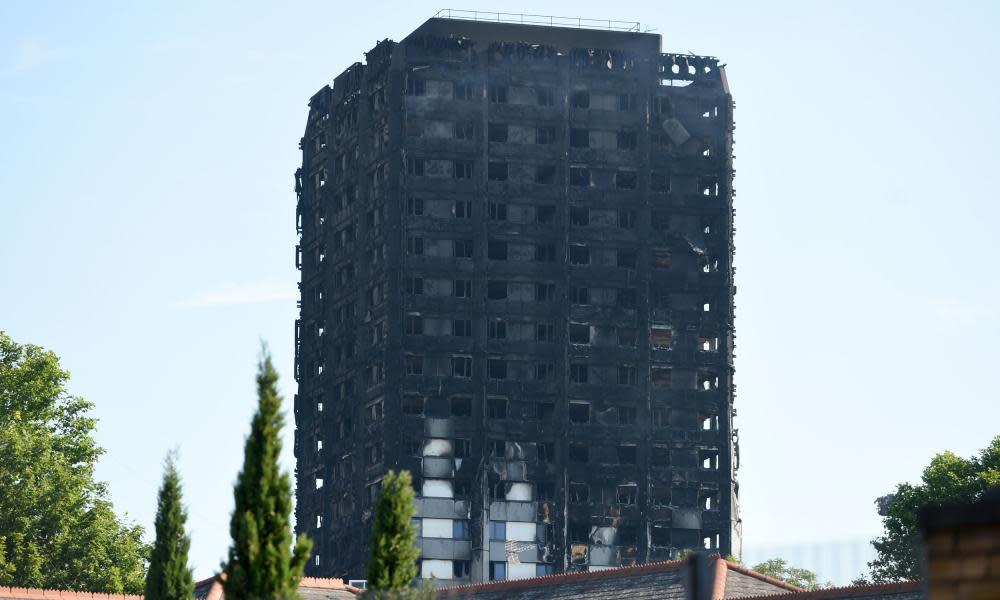Building survey shows Perth apartment block clad in flammable panels

Security guards have been posted at a Perth apartment block that houses at-risk young people after a building survey revealed it was clad in flammable aluminium panels.
The 98-unit Foyer Oxford building in Leederville, Western Australia, is the latest in a string of apartment buildings throughout Australia identified as using potentially dangerous aluminium cladding of the sort believed to have contributed to the rapid spread of the fatal Grenfell Tower fire in London earlier this month.
The Grenfell Tower was clad in aluminium composite panels (ACP) with a polyethylene core 12 months before the fire on 14 June, which killed at least 79 people. The highly flammable panels, which were intended to make the building more energy efficient, have been blamed for the rapid spread of the fire, which raced to the top of the 24-storey building within minutes.
The UK has announced a national inquiry into the use of the panels, which have been found and failed fire safety tests on 95 buildings throughout England.
The same type of cladding was blamed for the rapid spread of a fire at the Lacrosse Building in Melbourne in 2014 and has been implicated in fires in the United Arab Emirates and China.
The panels are the cheapest and most widely used of the three most common types of ACPs and are not authorised for external use on high-rise buildings in Australia. They cost about 13% less per square metre than fire-resistant ACPs, which have a combined mineral and polyethylene core.
Fire resistant cost $52m2. Poly $45m2. Fire resistant 15% more.It’s 13% less. PE cost 13% less than FR. FR costs 15% more than PE.
On Tuesday, the WA housing minister, Peter Tinley, told parliament that the cladding used on the Foyer Oxford building, which was partially funded by the state housing authority, contained “combustible material and is not compliant with the Building Code of Australia”.
Foundation Housing, a community housing organisation which manages the building, said it would not be evacuated but appointed 24-hour security guards to mitigate any risk until the situation can be “rectified”, Tinley said.
“I stated last week that the safety of tenants is my highest priority and, although the residents of Foyer Oxford are not public housing tenants, the Housing Authority is assisting Foundation Housing, which has the responsibility to address and remedy the situation,” he told parliament. “As previously stated, all new construction and refurbishments undertaken on the Housing Authority’s own properties comply with the requirements of the Building Code of Australia.”
The WA Building Commission surveyed the use of ACPs in 91 apartments, hotels and public buildings of more than three storeys high in the City of Perth and neighbouring Town of Victoria Park local government areas in 2015, following the Lacrosse fire. The Foyer Oxford apartment block is in the City of Vincent local government area, which was not included in the survey.
An interim report published in 2016 found that only the fire-resistant type of ACP cladding had been used, and that no buildings were deemed to be a fire risk. The final report is due this year.
The Queensland building minister, Mick de Brenni, who initiated an inquiry into the supply chain of noncompliant building products in the wake of the Grenfell Tower fire, said he would push other states and territories to follow Queensland’s lead and introduce tougher laws for builders at a national meeting of building ministers on Friday. He said it was also a border protection issue.
“My state colleagues and I have been calling for tougher action to stop these products from entering the country for a long time now,” De Brenni told Guardian Australia. “The Turnbull government has been negligent in their duties to protect consumers.”
Queensland has not conducted a formal audit for ACP cladding, but is conducting “proactive” inspections, De Brenni said. In 2016 it prevented a high-rise student accommodation block from opening for three months while a sample of the cladding could be tested in Melbourne. It was eventually declared safe to occupy.
The Victorian planning minister, Richard Wynne, also called on other states, territories and the commonwealth to follow his state’s lead, saying Victoria had “learned valuable lessons from the Lacrosse building fire”.
The Lacrosse building was declared safe by the Metropolitan Fire Brigade and the City of Melbourne following the fire and is still occupied, despite the cladding, which is subject to a legal battle over who has to pay to replace it. Notwithstanding the safety clearance, the former MFB chief Peter Rau has said he would not let his children live there.
New South Wales has not announced any plans to conduct a thorough audit to determine the risk posed by the use of ACP panels in Sydney, but an analysis of Australian Bureau of Statistics and building approval data in 2015, released under freedom of information by the state opposition, found between 1,500 and 2,500 buildings could be affected.
In lieu of a response to questions, Guardian Australia was provided with a statement from the NSW planning minister, Anthony Roberts, that said the government would monitor the investigation into the London fire and decide whether any further action needed to be taken in the state.

 Yahoo News
Yahoo News 
